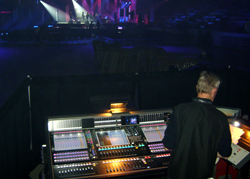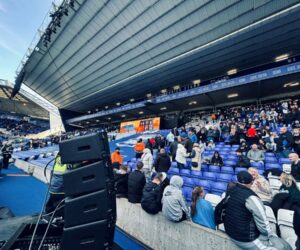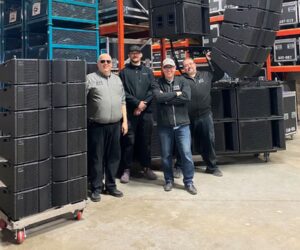The recent 2009 East Coast Music Awards (EMCA) saw many leading artists and industry figures come together in Corner Brook, located in the province of Newfoundland & Labrador, for a celebration of Canada’s East Coast music scene, with Nova Scotia-based Tour Tech East providing DiGiCo digital consoles for the two-stage production.
Celebrating its 21st year, this year’s EMCA ceremony featured 17 live performances and video clips interspersed with the presentation of awards in 31 categories, ranging from “DVD Of The Year” through to “Aboriginal Recording Of The Year”. One of the stages hosted band performances while the other hosted the house band and singer-songwriters with guest musicians.
A DiGiCo D1 digital console was deployed for monitors, while front of house engineer David W. Hillier manned a DiGiCo SD7 digital console.
“We had 64 inputs, with 32 from each stage split between FOH, monitors and the recording truck,” explains Hillier. “The podium mics, host mics and video playback went to a separate FOH mixer and operator, although we ran them to the SD7 as well for backup.”
“We also sent the recording truck mix to the other FOH console and the SD7 mix went to the recording truck so that we would have alternate backup mixes.”
The event marked Hillier’s first experience with the SD7, and it went quite well. “I spent a couple of hours at our local supplier, Tour Tech East, studying the SD7’s features and then I was pretty comfortable to go into soundchecks and rehearsals in the venue,” he says. “I used the eraser end of a pencil so that I could tap and move quickly on the touch screens during the show and I had a sequential playlist of the performances, so it took seconds to reset between acts.”
“With a great digital recall system and a great onstage audio crew, the show was extremely straightforward to operate,” he adds. “I only used the console’s onboard processing for three reverbs, one delay and two graphic EQs.”
For reference purposes, he recorded some soundchecks into ProTools using an M-Audio 1814 FireWire interface to his MacBook Pro, taking a matrix output of the SD7 to mirror the main L-R mix. And, he also made use of the SD7’s built-in video camera and monitor, a unique facility.




















